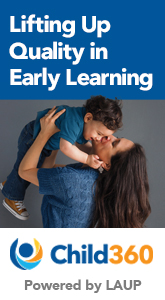ExchangeEveryDay Past Issues
 << Previous Issue
| View Past Issues | | Next Issue >>
<< Previous Issue
| View Past Issues | | Next Issue >> -Dorothy Canfield Fisher
"In Times Square [in New York City], people may push through the space as they rush from one spot to another. Or, they may stop, look around, and become completely overwhelmed by sensory overload. In these circumstances, people will often behave in ways they typically would not. For example, a woman wearing a t-shirt that reads 'Minnesota's Nicest Grandmother' pushes someone out of her way to get into a store. She is reacting to Times Square's constant sensory overload..." So write Sandra Duncan and Michelle Salcedo in their Exchange article, "Are Your Children in Times Square? Moving from Sensory Overload to Sensory Engagement."
The authors explain, "If adults exhibit challenging behaviors when faced with environmental sensory overload, it is not surprising that these overloaded environments can impact negatively in children as well...As early childhood professionals, we must strive to create spaces that caress, as opposed to assault young children's senses."
are buy one, get one FREE |






Comments (1)
Displaying 1 CommentCSBC
Denver, CO, United States
It seems that in ECE we love to talk about over- stimulation, but not under-stimulation. What about all the children bored by the same routines,the same curricular themes, playgrounds that only encourage simple play, and classrooms that do not challenge them? Why don't we look at the other side of this coin?
Post a Comment